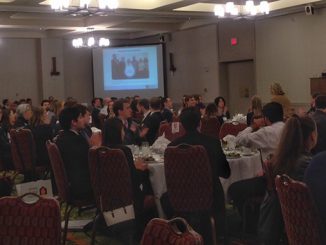
A recent research project at MBS’s Courage Center of Global Family Firms analysed the wealth creation and management situation of German top-athletes through personal interviews and expert discussions with the goal of shedding light on this underexplored territory and contributing to its advancement. The below article is a summary of the study:
Winning or Losing?
June 21st 2017. The High Court of Justice in London declares a man, who supposedly earned over one hundred-fifty million Euros, insolvent and unable to pay his debts. His name? Boris Becker. An incident that unambiguously seals Becker’s fate. Questions arise. What has happened to Boris Becker in the last thirty years? How is that even possible? The lawyer of the former top athlete submits a request to terminate the insolvency proceedings after seven months arguing with his client’s diplomatic immunity as sport and cultural attaché of the Central African Republic. In any case, the story seems unique: Ups and downs, twists and turns – from being on top of the “tennis globe”, a role model, a wealthy star, to seeking an exit from financial disaster and destroyed wealth.
A different story is written by Günther Netzer. The former athlete is one of the most vibrant personalities in German football history and perceived as one of the best to ever play the sport. Netzer accomplished a lot: As a player he won three German championships and World and European medals, before dominating as a coach. The journey after his football career, however, is even more impressive, as Netzer engaged in the world of businesses via Infront Sports & Media and acquired a small portion of this Suisse corporation. Amongst multiple other business engagements, Netzer is a joint partner and executive director of Infront Sports & Media, which has become his outlet leverage his experience, name publicity and network into a successful career as businessman.
On the one hand, a financial disaster. On the other hand, smart investments and financial success. Two top athletes, two totally different scenarios – but one commonality: Their active sports careers did not last forever.

Lindsey Vonn could be another example of an ending career. The 34-year-old American ski-star, recently retired holding eighty-two World Cup wins, only four behind Ingemar Stenmark’s celebrated record of eighty-six wins. In her early 30ies, Vonn had to accept that her past injuries made further competition at the highest level impossible. But life is still long – will it be the Boris Becker or Günther Netzer scenario from here?
Boris Becker, Günther Netzer and Lindsey Vonn. The stories may seem unique, but show one common challenge: Top athletes have a short and steep performance, career and wealth creation life-cycle – with the constant risk of an abrupt end due to injury. To “win in the long-run”, and end up on the wealthy side of the two possible scenarios, they all need to think about building and managing wealth early on, under extreme volatility, and innovate after their sports career, to add an additional layer of cash- and value generating activities.
A unique Wealth Creation Challenge: The Opposite Career and Income Path
For most individuals, careers begin with a low starting salary, but eventually, with time, effort and experience, higher income is generated. The lifecycle is a linear and steady upward trajectory. Top athletes experience a reverse career trajectory and salary path: They begin their young adult lives by making more, ideally much more, money than peers of the same age. However, after a few short and explosive years and retirement in their early 30ies, or potentially even before due to injury, top athletes need to have accumulated and managed enough capital to live well, even if a second career as TV presenter, soccer club manager / trainer, or entrepreneur provides comparatively less income than others will earn that have chosen traditional, longer-lasting career paths.
In essence, top athletes are urged to manage their early earnings very prudently in order to avoid substantial financial setbacks later in life. Such discipline and consciousness is hard though, if life is sweet, most awake time is consumed by training, competing or recovering, and social circles might appreciate a “spending mindset”, with prudent, conflict of interest free advisors being hard to find. As a result, cases of far-reaching financial issues of Athletes are more common than success stories: In fact, such financial issues are not limited to specific athletes, sports or leagues. In the NBA, for example, sixty percent of former players struggle financially within five years of their retirement. Likewise, it has been reported that seventy-eight percent of former NFL players either have gone bankrupt or experienced financial distress within two years of retiring from their professional sports careers.

Top Athletes’ Risk Profile: Short extreme Performance, no Time for Financial Rebounds
Few top athletes receive financial education. Few have professional advisors that understand the specifics of a Top Athletes performance lifecycle. Some athletes may feel obliged to support friends and family members financially. Other athletes may have grown up in poor circumstances and want to finally show “they have made it”, or simply feel the need for compensation after extreme training efforts and deprivation. Excessive consumption results. While doing so, top athletes may fail to recognize that their inflated financial earnings are a) extremely volatile, b) their performance cycle is extremely steep, but short (will not last forever) and c) might end abruptly with no time to rebound and correct prior financial mistakes or losses.
Hence, conscious wealth creation and early management is crucial for long-term prosperity.
In today’s active sports careers of top athletes, however, the difficulty to do exactly this is evident.
The professional sports lifecycle begins at a very young age and requires participants to devote majority of their time to outperform others. There is simply no time for building and managing wealth, a complex and multifaceted process that require time and knowledge.
Athletes are expected to deliver top performances and consistently succeed in the limelight of media. Their lives revolve around competitions and winning tournaments or leagues.
Consciously building and managing wealth is a whole different game, and far-reaching financial decisions may be taking without objective analysis and long-term implications in mind, at a very young age. Family members of external advisors are trusted to look into the matter, and the exemplary public cases of Lewis Hamilton, Messi and Ronaldo may serve as an insight into what happens then.
A 20-something-year-old athlete cannot be expected to have a full understanding of financial matters, the objectively best investment options and all taxation matters involved, while training and competing 5-6 days per week.
The Action Plan
First: Understanding the lifecycle like a 90 minute game.
Athletes should understand that their sports career is of limited time, sports performances are decisive for the continuation of their careers, and “Money made is money not spent” – ie earnings must be managed prudently.
Second: Discipline in the portfolio like in training.
Athletes should develop the self-discipline to resist to spend funds on luxury items, such as expensive cars, and save the largest part of their income in the early years. The establishment of a monthly budget or simple household book goes along with self-discipline as it helps to track all incomes and expenses, and oversee cash-flow.
Third: Luxury items depreciate and need expensive maintenance.
While the early affordability of luxury times may seem to be a blessing, and is not per se a curse, it is important to understand that some depreciate faster than others (i.e. loose value), and not every car, yacht, watch or luxury apartment is a collectible item that can be resold easily, or ever. Every cent spent on luxury items is a net “cash-out” and will not necessarily generate additional cashable returns at later stages. Even worse, most of these items will cause additional cash-burn due to their maintenance costs.
Fourth: Insure against the downside
Athletes should make sure to firstly acquire insurances, such as a sports disability insurance, that guarantees monthly incomes in the case of sudden injuries. Athletes are urged to early develop the awareness that the sports career is not only short-term, but can also end abruptly at any time due to severe injuries.
Fifth: Invest, but focus on wisely securing a “baseline” first
At long last in this phase, athletes should start their investment activities. “Building a stable baseline” with assets that generate stable secure returns (such as fixed income, real estate and Index funds) should be the first essential part of building the wealth portfolio. A monthly contribution to building a portfolio that helps generate additional stable passive income, which also compounds over time, will assure that a “baseline” that can eventually covers a reasonable monthly budget gets puts into place during the active career.
Sixth: Double dip through additional value- and cash-generation
Subsequently, athletes can leverage their ongoing performance and publicity into additional areas of cash income or value creation, such as from public appearances, social media followers and brand endorsements. Many athletes, particularly in team sports, may not think about these opportunities early enough, as their clubs manage most of their public persona. It is evident though that the time during the active career is also the most prolific time to establish and build-up opportunities for additional revenue streams that may uphold their profitability even a long way after the sports career has ended. Herein, one dos not necessarily need to “pay cash” and become a start-up investor, this can also be achieved by “earning in” and receiving shares from the creation of publicity and endorsements. In addition, building a strong personal brand during the active period is equivalent to building a strong platform for any entrepreneurial activity after the sports career ends.
Further, as these additional revenue streams start taking off, keeping to the originally established budget will be key. Any cent earned in addition should not be quashed by unnecessary spending, but be used to acquire additionally return-yielding assets. Warren Buffet would call it “generation of compounding interest”.
Seven: Learn “how money works”
As the career progresses, learning how money work will become essential for the “second career” after actively competing. Here, individual athletes should turn to educators that can convey the message in layman’s terms. Clubs can also play an important role in educating their athletes on Wealth Management and Entrepreneurship, hence building a solid alumni base of former athletes that might even become valuable business partners to the club later on, just as the leading business families of the world educate their offspring to be future-oriented entrepreneurs.
Eight: Be the captain of your own long-term portfolio
As top athletes enter the later stages of their careers, with a clear end in sight, they should take a very active interest in their investments. Diversification of assets needs to be guaranteed to effectively mitigate risk. Real estate investments should be monitored closely to truly generate the envisioned passive income flows. A portion of gold in the portfolio can protect against the ultimate downside. A well thought through risk profile that leads to a consciously managed portfolio of stocks and bonds will become key in this phase. Athletes should maintain a clear quota of their annual income that is invested and then carefully supervised.

Nine: After ending up on top, take it to the next level in the “expression session”.
Just as professional snowboarders would do after the X-games have officially ended, and the non-judged expression session begins, top athletes can express their entrepreneurial aspirations in their second career, after retiring from active sports. Herein, however, taking time off and allowing oneself to carefully craft the envisioned path for the next stage in life will be of outmost importance. Too many athletes have burnt a significant portion of their wealth shortly after retiring by hopping on the “most trendy investment bandwagon of the moment”, not aligning their investment and business strategy with their own brand, the existing portfolios and their very own strategic analysis of personal strengths, weaknesses and passions. Philanthropic work can also play an important role in this phase as it opens additional areas of opportunity for impactful work as well as personal branding and network development after the active career ends.
In summary, passive profits from the investments made during the active career should exceed the required amounts for fixed costs of life at this stage, sticking to a rather strict budget. The (former) top athletes should by now be independent of their ongoing incoming net profits from additional activities after retirement. Any additional funds gathered beyond the monthly budget can go into further investments and expand their active asset base. Such extra funds (and only these, not the principal amount!) can be allocated to high risk investments such as direct participations in early stage companies or the development of own entrepreneurial ventures. These investments should only be considered when the primary stock of funds is guaranteed, and the Athlete can be afforded to lose such funds.
The essence: Not losing short-term, and winning long-term!
The above suggestions are the short version of an extensive analysis conducted with top-athletes, and may serve as a first orientation for those that have encountered athletic success and are beginning to enjoy the well-deserved financial returns.
The study has shown that only a few top athletes were aware of the above described necessities early on in their careers – many left this essential task to chance, and few were truly conscious that the short and highly volatile earning lifecycle of athletes can end more abruptly than many would want to imagine while they are on a “winning streak”. Those that prospered long-term were the ones that invested rather conservatively, with truly professional support, during their active career assuring “not to lose (money)”, and prepared to get involved with the active management of their wealth and prosperity after the career, “compounding reputation, influence and wealth” then.
Referring to the cases introduced in the beginning, it has become evident how the “9 steps for wealth creation & management” might have been forgotten in one case, and pursued in the other. It would be the ultimate win for many top athletes, to also hit these 9 steps well and hence reach long-term prosperity after a challenging and demanding career in professional sports.






